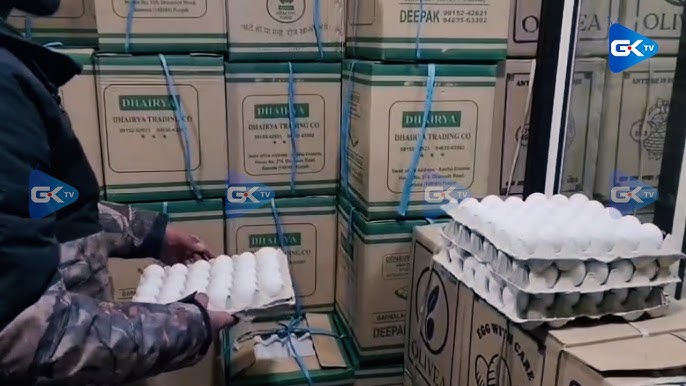Kashmir’s Water Crisis: Study Finds Dangerous Pesticide Contamination in Drinking Sources
By: Javid Amin | Srinagar | 03 Aug 2025
Silent Poison: Contaminated Waters in the Valley
A recent scientific study has sounded a chilling alarm in South Kashmir—pesticide contamination is silently infiltrating the region’s drinking water, threatening human health, agricultural sustainability, and the ecological lifeblood of the Valley: the River Jhelum.
Conducted across multiple districts, the study analyzed water samples from rivers, springs, and reservoirs, finding dangerous levels of agrochemical toxins—a consequence of years of unregulated pesticide use in the Valley’s booming horticulture industry.
What the Study Found
In a survey of 23 water sources across South Kashmir, researchers discovered:
-
Traces of pesticides and insecticides in both surface and groundwater.
-
Contamination levels were highest near orchards, farms, and areas with frequent pesticide application.
-
Agrochemicals, often applied without training or regulation, are leaching into wells, streams, and municipal water supplies, especially during the monsoon season and irrigation cycles.
This pollution isn’t isolated to South Kashmir. In Rajouri, a separate health tragedy linked to chemical-laced water saw 17 fatalities, confirming pesticide presence in water samples tested post-mortem.
Health Implications: More Than Just a Bad Taste
The toxic infiltration has serious long-term health consequences, especially for vulnerable populations. Health experts warn:
-
Neurological issues, including memory loss, headaches, and impaired motor skills.
-
Gastrointestinal problems and increased risk of cancer and kidney disease.
-
Children, pregnant women, and the elderly are particularly susceptible to these toxins, even at low exposure levels.
Dr. Arshad Wani, a public health specialist in Anantnag, notes, “We are seeing a rise in unexplained illnesses that correlate with regions showing high pesticide usage and compromised water quality.”
Environmental Fallout: Jhelum’s Slow Poisoning
The Jhelum River, once a symbol of Kashmir’s purity and resilience, is now acting as a conduit for chemical runoff:
-
Aquatic ecosystems are suffering from decreased biodiversity and fish mortality.
-
Soil health is degrading, as chemical-laden irrigation water disrupts microbial balance.
-
Traditional water sources like baolis (stepwells) and natural springs—once trusted lifelines in villages—are showing chemical traces or have dried up due to altered groundwater tables.
Environmentalists warn that unchecked agricultural expansion without environmental safeguards could render swathes of land unusable in the coming decades.
Regulatory Lapses: How Did We Get Here?
The crisis isn’t just one of science—it’s also a failure of policy and public health infrastructure.
Problems Identified:
-
No mandatory buffer zones between farms and water bodies.
-
Lack of regular water quality monitoring, especially in rural districts.
-
No licensing enforcement for pesticide vendors—allowing the sale of banned or dangerous chemicals.
-
Low farmer awareness about safe usage, alternatives, and protective equipment.
Government programs like the Paramparagat Krishi Vikas Yojana (PKVY) exist to promote organic farming but lack grassroots reach and enforcement in Kashmir’s horticultural belts.
What Needs to Change—Now
This crisis calls for a comprehensive, multi-tiered response involving local governance, public health agencies, and the farming community.
Immediate Recommendations:
-
Strict regulation of pesticide sales and usage—especially within 3 km of water bodies.
-
Routine water testing at district and panchayat levels, with results made public.
-
Mandatory farmer training programs on chemical handling and alternatives.
-
Promotion of organic and integrated pest management (IPM) strategies.
-
Establishing green buffer zones between agricultural land and water infrastructure.
Community Voices and Local Action
Some communities are already taking action:
-
In Pulwama, a farmer-led initiative is promoting natural pest repellents using garlic, neem, and cow urine.
-
Women’s groups in Anantnag are demanding testing kits and filtration units from local authorities.
-
NGOs like Save the Springs Kashmir are training villagers to test water for pH and chemical residues using simple kits.
But these efforts need institutional support and funding to scale up and make a broader impact.
Final Word: A Wake-Up Call for the Valley
This isn’t just a story of polluted water—it’s a symptom of development without safeguards, of policy without enforcement, and of ignorance being paid for in human lives.
The water that nourishes Kashmir’s lush orchards and quenches its thirst shouldn’t be a source of poison. Without urgent intervention, the region’s health, economy, and environment are at risk of irreversible damage.




